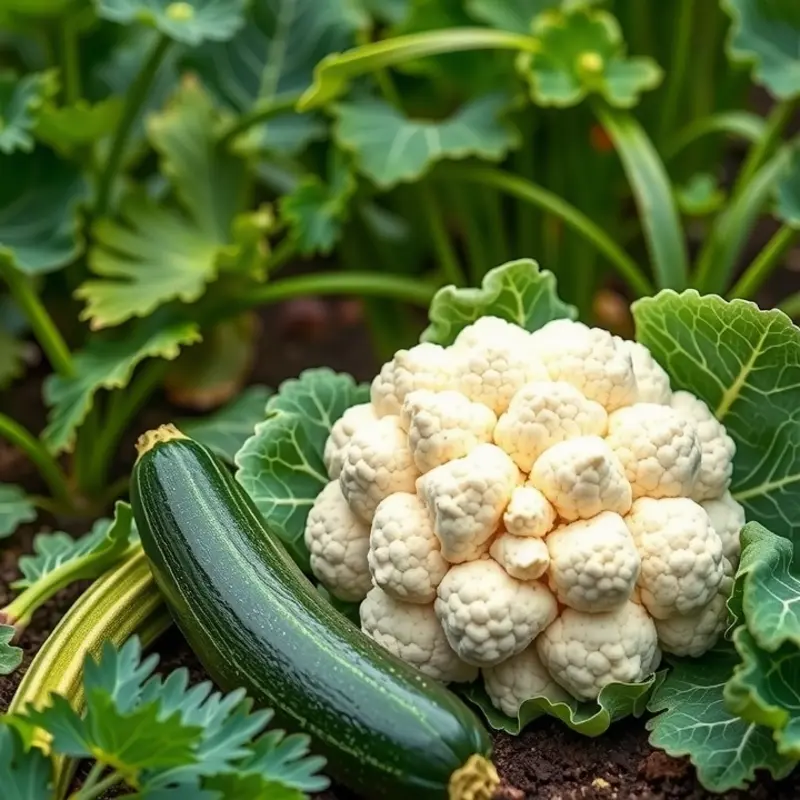For many home cooks and dietary-conscious individuals, rice is a staple that often takes center stage. However, there are numerous reasons why you might seek alternatives—from dietary restrictions to simply wanting to mix things up in the kitchen. This guide presents easy-to-implement substitutes for rice that maintain flavor, texture, and nutritional benefits, making it easier to diversify your meals while keeping health in mind.
Healthy Grains: Quinoa and Farro

Quinoa and farro stand out as versatile grains that can easily replace traditional rice in many dishes. Known for their unique flavors and textures, they offer delightful variations that can elevate the simplest meal.
Quinoa, a seed often considered a grain, is celebrated for its complete protein profile, making it a favorite among those seeking plant-based nutrition. Packed with essential amino acids, it contributes significantly to dietary protein needs. Its mildly nutty flavor pairs well with savory and sweet dishes alike. Cooking quinoa is straightforward: rinse the seeds under cold water to remove any bitter coating, then simmer in a 2:1 water-to-quinoa ratio for 15 minutes or until fluffy.
The health benefits of quinoa extend beyond its protein content. It is rich in iron, magnesium, and fiber, supporting overall health by enhancing energy levels and digestive functions. Quinoa’s adaptable nature means it can replace rice in salads, stir-fries, pilafs, and more, bringing a nutritional boost with each serving. Explore tips for easy plant-based eating to incorporate more quinoa into your meals.
Farro, an ancient grain with a chewy texture and nutty taste, has been a staple for thousands of years. It contains ample fiber, protein, and essential nutrients like magnesium and zinc, contributing to heart and bone health. Cooking farro is simple; it usually requires soaking overnight for optimal texture. Boil it in salted water, with a 3:1 water-to-grain ratio, for about 30 minutes, until tender yet firm.
Farro’s hearty texture makes it an excellent choice for soups, salads, and risottos, offering a robust alternative to rice. It holds its shape well, adding a satisfying bite to any dish. Farro’s nutrient density supports a balanced diet, aiding in maintaining healthy blood sugar levels and efficient digestion.
While both quinoa and farro offer clear nutritional advantages, their distinct textures and flavors are what truly make them stand out as rice substitutes. Incorporating these grains into your diet not only diversifies your meals but also enhances your nutritional intake significantly. Their ease of preparation is an added boon for those seeking quick and healthy meal solutions.
Embracing quinoa and farro as staples in your pantry elevates everyday cooking into wholesome culinary exploration. It’s a tasteful step towards enriching meals without sacrificing convenience or nutrition.
Vegetable Wonders: Cauliflower and Zucchini Rice

Cauliflower and zucchini have emerged as excellent rice substitutes, offering both nutrition and taste. For those looking to cut down on carbs while maintaining flavor, these vegetables present a versatile option.
Cauliflower rice has become a staple for many seeking a low-carb diet. This cruciferous vegetable is packed with vitamin C, vitamin K, and fiber, contributing to its popularity. Preparing cauliflower rice requires only a few simple steps. Start by removing the leaves and core of a cauliflower head, and cut it into smaller florets. Use a food processor to pulse these florets into small, rice-sized pieces. Alternatively, you can manually grate the florets for a similar result. To cook, sauté the cauliflower rice in a bit of olive oil over medium heat, adding seasonings like garlic or herbs for extra flavor. In just five to seven minutes, it’s ready to serve.
Zucchini offers another intriguing alternative with its vibrant green color and light texture. Like cauliflower, zucchini is low in carbs and high in nutrients, notably vitamin A and potassium. Creating zucchini rice involves grating the zucchini using a box grater or food processor. The texture resembles rice more closely if you remove excess water by pressing the grated zucchini in a clean kitchen towel. This step prevents sogginess and improves the texture of your dish. Sauté zucchini rice for about three to four minutes with a little olive oil, until it is just tender.
Both cauliflower and zucchini rice can be seamlessly integrated into various dishes. For a quick and flavorful meal, consider a vegetable stir-fry. Sauté your choice of vegetables with ginger and soy sauce, then add a serving of cauliflower or zucchini rice for a delightful twist on a classic dish. Alternatively, use these rice substitutes as a base for curries, stews, or as a bed for grilled proteins.
For those interested in diversifying their meals with healthy, low-carb options, these vegetable wonders provide delicious alternatives. If you choose to explore further, there are numerous ways to transform these nutritious staples into delicious, satisfying meals. Embrace the versatility of your kitchen by experimenting with different spices, herbs, and cooking techniques. For inspiration on incorporating these substitutions into meal planning, consider practical ingredient batching for a more efficient cooking experience.
Final words
Incorporating rice substitutes like quinoa and cauliflower into your cooking not only elevates the nutritional profile of your meals but also sparks creativity and excitement in the kitchen. Each alternative offers unique flavors and textures, making every dish a new experience. By experimenting with these versatile ingredients, you can cater to dietary needs while enjoying delicious, hearty meals. It’s time to explore beyond the rice and savor the numerous benefits of these alternatives!







